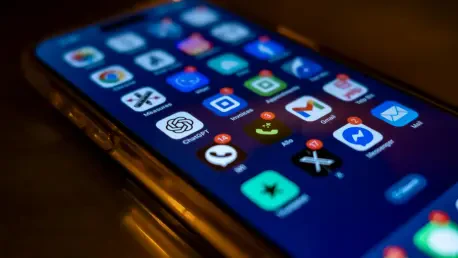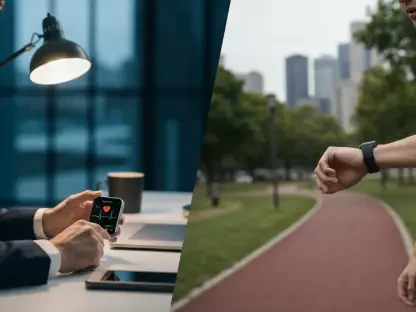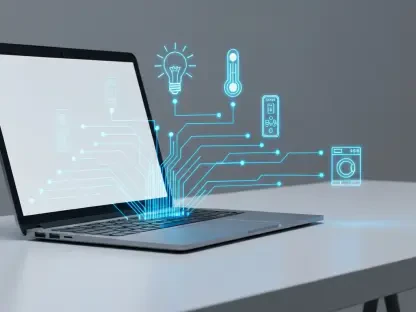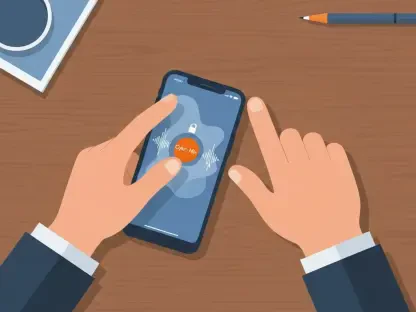Rich Communication Services (RCS) has revolutionized the way users interact through Android phones, offering a more enhanced and interactive messaging experience than traditional SMS. By utilizing Google Messages, Android users gain access to a suite of features, including read receipts, high-quality media sharing, group chats, and encrypted messaging. These advancements eliminate the need for third-party apps, making messaging more seamless and integrated than ever. The journey of RCS from its inception and gradual adaptation by companies across platforms signifies a remarkable transition in mobile communication. In 2025, Apple made strides in connectivity by fully integrating RCS into iOS, bridging the gap between Android and iPhone users. This incorporation has paved the way for richer exchanges and secure conversations across all major mobile ecosystems. As technology continues to evolve, understanding how to properly configure and manage RCS on Android devices becomes paramount for users seeking optimal communication.
Understanding RCS Versus Traditional SMS
RCS stands distinctly apart from SMS by operating over a mobile data plan rather than relying on the cellular network. This evolution allows for more dynamic features such as typing indicators, inline replies, and the critical element of encryption. It leverages the internet efficiencies that applications like WhatsApp and iMessage already utilize, reshaping how people perceive messaging on Android devices. One pivotal feature underscoring this transformation is the capacity to send and receive content over Wi-Fi, significantly reducing dependency on mobile networks. It enhances the exchange of photos, videos, and other media, thus providing a richer interaction experience. Moreover, Android users benefit from an integrated messaging app, eliminating the need for any other applications to fulfill their communication needs. The compelling enhancement of features means messaging is not just about text anymore—it’s about creating an engaging and interactive dialogue, similar to what popular apps offer but now native to Android’s core messaging tool. With Apple’s recent adoption of RCS, there’s unilateral support for comprehensive and interactive messaging that ensures cross-platform communication is seamless.
Activating RCS Chat Features in Google Messages
Setting up RCS messaging on Android devices is relatively straightforward with Google Messages. This app includes all the functionalities RCS offers, making it a central tool for users seeking modernized communication. For initial setup, Google prompts users to enable RCS, ensuring the full suite of features is accessible from the start. If this prompt does not appear, users can manually activate RCS through the app settings. This activation involves opening the Google Messages app, selecting the profile icon, navigating to the Messages settings, and accessing the RCS chats menu. A simple toggle switch turns RCS chats on, often followed by phone number verification. Once this process is completed and the status reads ‘Connected,’ users can begin sending messages over Wi-Fi or mobile data, unlocking richer messaging possibilities. It’s essential to note that regional limitations or carrier-specific restrictions may affect availability, but in most cases, the transition from SMS is seamless.
Disabling RCS Features and Their Mitigations
While the benefits of RCS are plentiful, there are instances where turning off RCS becomes necessary. Connection issues, transitioning to a new device, or personal preference may prompt users to revert to standard SMS or MMS. Disabling RCS is as straightforward as enabling it: users navigate to the Messages settings via the app’s profile icon, select RCS chats, and toggle off the RCS feature. A prompt will appear, warning of an impact on group chat functionalities, yet standard text messaging remains unaffected. Users are advised to disable RCS before transitioning to new devices to mitigate potential delivery issues. Additionally, in cases where access to the prior device is lost, Google provides a web form to deregister the number from RCS services, ensuring smooth continuity in messaging. However, frequent toggling of RCS is discouraged as repeated actions within a brief period may temporarily block RCS chat access, affecting the user’s ability to send messages efficiently.
Identifying Message Delivery Methods
Indications on how a message is sent or delivered are clear within Google Messages, providing users insight into the mode of communication being utilized. This differentiation helps users manage data usage and understand any potential carrier charges. A regular arrow or an arrow accompanied by a lock signifies delivery through RCS over Wi-Fi or mobile data, showcasing encryption security. If SMS or MMS is employed, this is marked explicitly, allowing users to discern plain text or multimedia message transport. While RCS messages sent over Wi-Fi typically do not incur carrier charges, it is crucial to note that mobile data usage can still apply, especially for media-rich messages. Monitoring this aspect ensures users make informed decisions, adapting their messaging habits to optimize costs while leveraging the features RCS presents. Efficient resource management remains key, especially when operating in regions with stringent data provisions or varying network conditions.
Comprehensive Features of RCS Chat
RCS transcends traditional messaging apps with a robust set of features that cater to modern communication needs. Being equipped with read receipts provides transparency on message delivery and interaction, while typing indicators facilitate real-time engagement with correspondents. When instances arise where RCS is unavailable, messages seamlessly revert to SMS or MMS, ensuring constant connectivity. Users can manipulate auto-download settings for media, customizing when and how content is retrieved based on data preferences, avoiding unwanted charges during roaming or high data usage periods. Message settings within RCS chat offer a comprehensive control panel where users can fine-tune these features according to their requirements, maximizing the functionality tailored to individual usage patterns. This level of personalization and intuitive response management establishes RCS as a formidable force in the messaging domain, underscoring its flexibility and user-centric design that adapts to various scenarios in communication.
Advanced Capabilities in Google Messages
Google Messages, beyond its standard functionalities, provides users with advanced capabilities, enhancing the overall messaging experience. This includes interactive features such as message reactions, where emojis convey instantaneous emotional responses to messages received. Group messaging is enriched, especially when all participants use RCS, with enhanced delivery and typing notifications. Additionally, ensuring security and privacy through end-to-end encryption when RCS is active confirms that sensitive information remains protected throughout communication strands. Users can reply to specific messages directly, assisting in organized dialogues within vibrant group chats. Moreover, integration of YouTube previews allows meaningful content sharing while keeping conversations uninterrupted. Smart replies offer intelligent automated suggestions to streamline interaction, further simplifying engagement. Google Messages effectively amalgamates these facilities, offering an experience that seamlessly rivals established platforms while remaining native to Android devices. As these innovations expand, the merging of functionalities fosters a versatile communication environment adaptable to varied user needs.
Cross-Platform Messaging with Apple’s Integration
The introduction of RCS in Apple’s ecosystem through iOS redefines cross-platform communication, abolishing previous limitations inherent in SMS-based exchanges between Android and iPhones. Apple’s embrace of RCS aligns with technological advancements aimed at unparalleled connectivity across device types, allowing users to transcend barriers in their interactions. While the execution of RCS on Apple may differ from Android, the core functionality promises significant improvements, fostering richer media exchange, better encryption protocols, and a cohesive group messaging experience across both operating systems. This core functionality effectively mitigates the frustration associated with SMS constraints, opening up dialogues without reliance on third-party applications. As platforms converge around RCS standards, users benefit from a unified communication network that adjusts to their rising expectations for seamless and secure messaging environments. This evolution embodies a key milestone, highlighting progress toward standardization, interoperability, and enhanced user experience across the major mobile technology landscape.
Prospects Following the Evolution of RCS Messaging
Rich Communication Services (RCS) have transformed messaging on Android phones, offering enhanced features that surpass traditional SMS. With Google Messages, users benefit from functionalities like read receipts, high-quality media sharing, group chats, and encrypted messaging, all without requiring third-party applications. This seamless integration marks a significant shift in mobile communication from RCS’s initial phase to its widespread adoption across various platforms. In 2025, Apple bridged the gap between Android and iPhone by fully embedding RCS into iOS, enhancing the interaction between these ecosystems. This move has facilitated more dynamic exchanges and secured conversations across all major mobile systems. As technology progresses, mastering the configuration and management of RCS on Android devices becomes increasingly crucial for users aiming for optimal communication. Understanding these technologies offers users a more enriched and safer messaging experience, advancing the way we connect, share, and communicate in the digital age.









